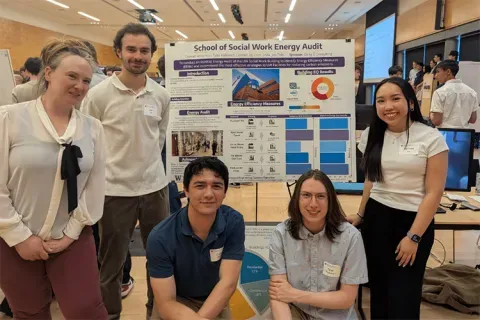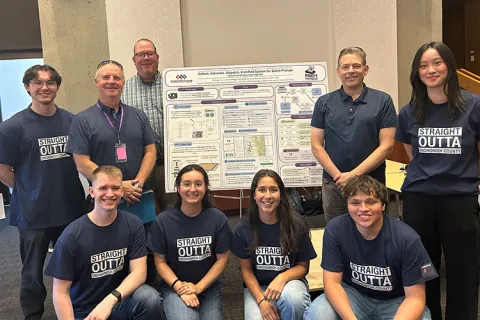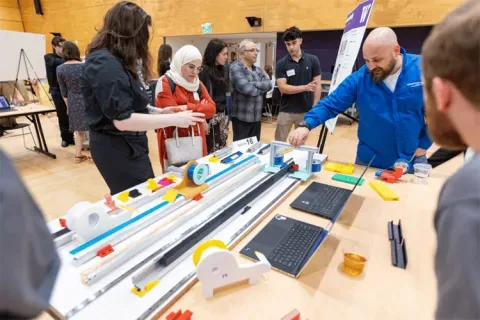Jamestown S’Klallam Tribe, Environmental Planning Program
Jamestown S’Klallam Tribe Community Resiliency Center
The Olympic Peninsula has limited electrical transmission capacity, limited on-peninsula repair crews, and disaster-vulnerable landscapes and populations, resulting in poor electrical reliability and susceptibility to long duration power outages. This student team worked to explore the cost and capabilities of a renewable energy generation & storage microgrid to make the Jamestown S’Klallam tribe's tribal community center a resiliency hub that keeps critical communications infrastructure live while supporting other community needs during long duration power outages. This student team worked to build off of prior analysis staff at the Washington Clean Energy Testbeds have performed to support the microgrid Seattle City Light recently completed at the Miller Community Center and Snohomish County PUD recently built in Arlington. Microgrids for community resiliency are a growing area for engineering design. An advisory group helped guide the technical and community elements of all three microgrid projects on the Olympic Peninsula. Desired outcomes this student team worked towards include a final engineering report that: (1) Describes the context for the study, including a statement of the community resiliency goals and metrics based on community input, and the data sources available for estimating the electrical loads in the community center, solar and wind energy potential of the site, and other environmental factors (site hazards, fuel availability, etc.) (2) Applies community priorities and engineering principles to determine microgrid infrastructure needs and costs to support the highest priority loads under several discrete operational scenarios, for example, outages occurring in summer vs winter, and for islanded operation of days, weeks, or months (following a catastrophic disaster). (3) Detailed technoeconomic analysis of a base case design, including engineering drawings, site analysis, component lists and estimated pricing, with performance informed by real time digital simulation of the renewable grid operated over a typical one year period at the site. A stretch goal for this project that the student team could work toward is exploring alternative cases, such as considering the role of bidirectional charging of mobile resiliency units the Tribe has funding to purchase.
Faculty Adviser(s)
Payman Arabshahi, Electrical & Computer Engineering
Related News

Mon, 10/13/2025 | UW Mechanical Engineering
Capstone collaboration leads to award
An ME capstone team received first place for its energy audit of the UW School of Social Work building.

Thu, 07/17/2025
UW engineering students develop smart ballot solution
UW engineering students develop smart technology solution to improve ballot collection for Snohomish County.

Mon, 07/07/2025 | UW Mechanical Engineering
Capstone creations
Students displayed innovative capstone design projects at the 2025 expo.

Fri, 09/20/2024 | UW Civil & Environmental Engineering
Smarter irrigation for a greener UW
A new project combines satellite data with ground sensors to conserve water and create a more sustainable campus environment.